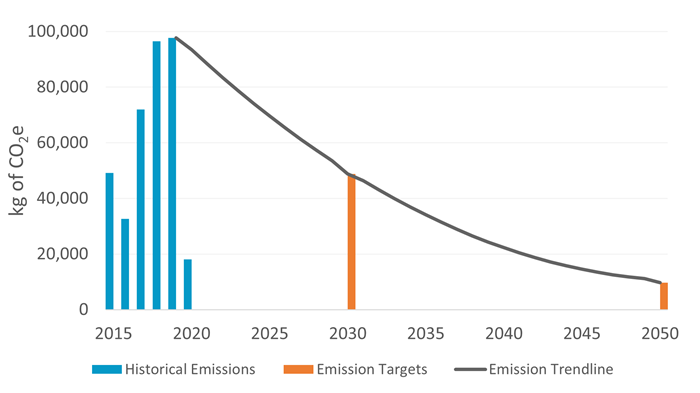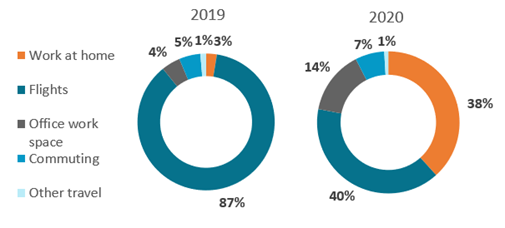Committing to Meaningful Net-Zero before 2050
16 November 2021
This year Aether has joined the SME Climate Hub commitment to be carbon-neutral before 2050. This pledge challenges small and medium sized businesses to halve their emissions by 2030 and achieve carbon-neutrality by 2050.
Aether has been a certified carbon-neutral company since January 2012 – so what makes this commitment any different? This all comes down to how you define being carbon-neutral. Up until now, we have been estimating the emissions produced from all business-related activities every year, covering everything from flights to heating the office. We then seek to offset/mitigate this estimated carbon footprint by donating a portion of company profits to a variety of green projects through ClimateCare – in 2019, for example, these included Lifestraw Carbon for Water, Kenya and Gyapa Stoves, Ghana.
What sets the SME Climate Hub commitment apart from our previous carbon-neutrality actions, and makes it much more of a challenge, is the core idea behind the pledge: that reducing emissions is far more important than simply offsetting them. After all, it’s better to not produce greenhouse gases in the first place than have to deal with them once they have already been released into the environment. Offsetting approaches are often flawed for a variety of reasons, and should not be used as an excuse for inaction or in place of reducing emissions. The SME Climate Hub commitment only permits a company to offset 10% of their baseline emissions by 2050. For us at Aether, our baseline year will be 2019, where we have estimated that our total emissions were 97.7 tonnes of CO2e. This means that, by 2050, we have pledged to keep our carbon footprint below 9.77 tonnes of CO2e.

Figure 1: Emission targets for 2030 and 2050 (orange) showing the historical emissions from 2015 to 2020 (blue). An emissions trendline shows the approximate expected path to only producing 9.77 tonnes of CO2e by 2050.
Last year, due to the COVID-19 pandemic, normal business activity was disrupted. Before the pandemic, the nature of Aether’s work in every continent around the globe meant that the majority of our carbon footprint came from flights. However, in 2020, only eight business flights were taken by Aether employees before the first lockdown, massively reducing our carbon footprint to only 18.1 tonnes of CO2e as we all retreated to work from our homes. The pandemic has demonstrated that even when faced with radical changes to the way we work, we can still operate effectively and continue to support clients. Aether is proud to not have made any staff redundant or furloughed any staff since the lockdown began. However, more efforts will need to be made to ensure we stay on track for carbon-neutrality in 2050 and so we are in active discussions internally as to how we can achieve this.
With more people working from home, we have had to update our methodology for calculating the emissions produced through remote work. This was done using the homeworking emissions white paper by EcoAct, which involved calculating the emissions from electric device use and incremental home heating in the colder months. Most of us working at Aether, like 87 % of UK households, have gas boilers to heat our home - but this isn’t the case for all of Aether’s staff. For example, I recently discovered that one of our members of staff lives on a self-sustaining farm with a biomass boiler! In 2020, with so few business flights occurring, the emissions associated with working from home accounted for 38% of Aether’s total carbon footprint. In 2019, this figure stood at only 3% after recalculations based upon this new methodology.

Figure 2: Comparison between the breakdown of emissions sources for the 2019 carbon footprint and the 2020 carbon footprint.
Reaching our ambitious 2050 net-zero target will clearly require some creative thinking and willingness to change how we have historically operated as a company. For the UK as a whole to achieve its 2050 climate goals, it’s going to take decisive and imminent action from both government and businesses. There’s no time like the present.
Our 2020 carbon footprint data viewer can be seen here.
See all news